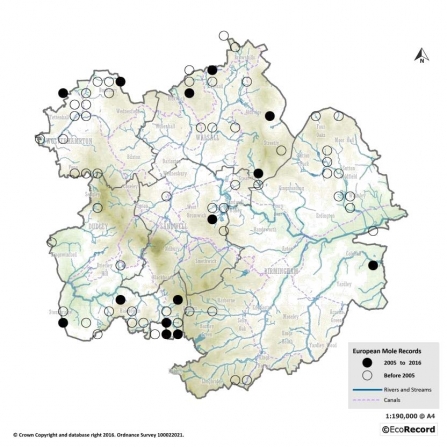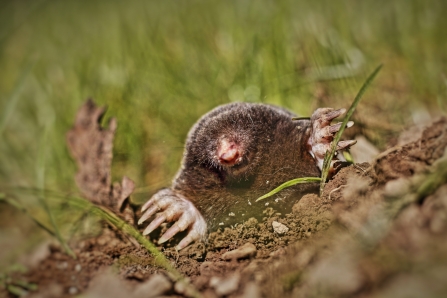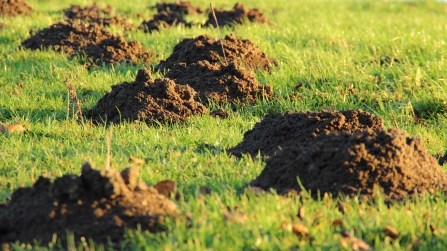
Credit: EcoRecord
Within Birmingham and the Black Country most mole records come from the suburban fringes of Wolverhampton and Dudley, the Sandwell Valley and Sutton Park. While this may represent areas of greatest abundance, it is likely that moles have been under-recorded, not just in rural areas and woodland, but in areas with extensive gardens. However there are so few spots in our cities and towns we wonder if there is something more going on. Are they put off by the plethora of underground tunnels, utilities and river culverts? We’d love to find out – please help by sending your mole and molehill spots to EcoRecord at enquiries@ecorecord.org.uk
Moles are easily recognised by their distinctive cylindrical body with powerful spade-like front feet.
The fur is short, black and velvety and can lie forwards or backwards allowing the mole to travel both forwards and backwards in narrow tunnels with surprising speed.


